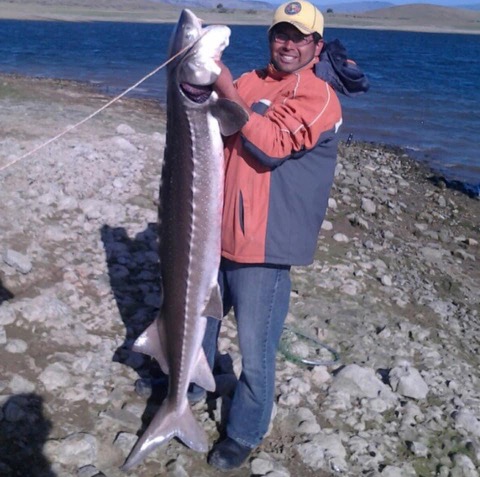November 10, 2023 After receiving enthusiastic reports from Frank yesterday, in which he vividly described the spectacle of Striper boils scattered throughout the lake, accompanied by a frenzy of birds working large schools of bait while stripers relentlessly attacked write at the boat ramp. I simply couldn’t contain my excitement. My original plan to tie flies and pack for a week-long adventure to Christmas Island, starting this Monday, had to be momentarily set aside. I felt an irresistible urge to head out one more time before embarking on my Christmas Island journey. Coincidentally, Ken Oda and Mark Won, both eager to recreate their recent successful outings, were on the same wavelength. Thus, we all gathered at the Forebay early this morning, hoping to witness the Forebay teeming with fish in a boiling frenzy.
The day unfolded largely according to our expectations, except for the conspicuous absence of the lake covered in boiling stripers. Nevertheless, the day turned out to be quite remarkable, even though surface action was somewhat limited due to the reduced flow from the Mendota Canal. The three of us managed to land over 100 stripers, and most of them were substantial specimens, ranging from 4 to 8 pounds in weight. Mark, Ken, and I strategically spread out across the western end of the forebay, and it became evident that both sides of the flats consistently yielded numbers of stripers actively pursuing scattered prey. Mark and Ken, equipped with their float tubes, noted a consistent ebb and flow of fish in their vicinity. At one point, Ken landed a remarkable 18 fish from a single location fishing from his tube. Mark, on the other hand, stumbled upon that elusive school of large fish lurking in front of the campground, the same area where Dan and I had a memorable encounter a couple of days ago, with Dan managing to land two impressive 8-pounders.
As for me, I stumbled upon a massive congregation of fish huddled against the shoreline, seemingly fixated on the abundant bait pushed up against the reeds in just 4 feet of water. Employing a T11 line with a non-weighted fly, I was able to engage with fish feeding right at the water’s edge all day long. Interestingly, all the fish I managed to catch today were cruising at depths ranging from 4 to 6 feet. By the end of the day, my tally stood at 43 fish caught when the my SD cards filled up and stopped recording.












Meng,
Great post. Coming to the forebay 11/20 & 21. Hope the bite is still on.
Go gettem on Christmas Is.
Hope you’re tying some good flies….got the motor tuned up yesterday. Maybe see you tonight?